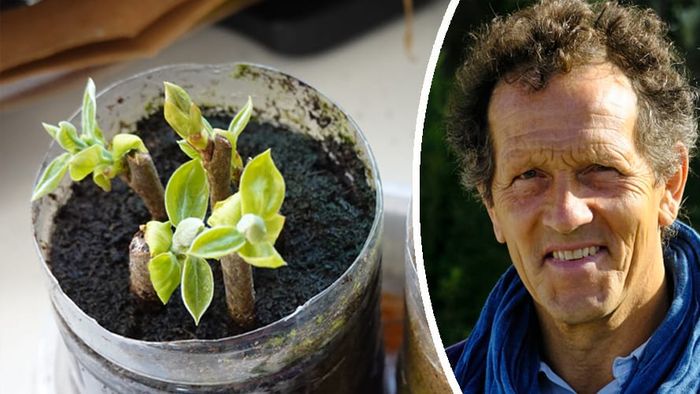SEPTEMBER TASK: Persimmon is one of the plants that can be propagated by cuttings this month (Image: Toni Jardon/Getty and Ormskirk Advertiser)
September is ‘one of the gentlest and most beautiful’ months of the year, according to Monty Don. While this summer has seen extreme heat across much of the country, this month marks a seasonal shift, with days getting shorter and gardens bathed in the ‘most seductive light of the year’.
“The garden is fading, but elegantly, the textures thinning, becoming translucent, light seeping and slipping through the yellowing leaves,” Monty writes in his monthly blog. As summer gives way to autumn, he says it’s the ideal time to take cuttings of favourite plants.
While the prospect can be daunting if you’ve never done it before, the Gardeners’ World expert has explained exactly how to take semi-ripe cuttings. All you need is a plastic bag, a sharp knife and secateurs.
READ NEXT
“They are easy, mostly successful and the gateway to producing scores of new plants for free”, says Monty. Plus, taking cuttings now can safeguard the future of half-hardy perennials or tender shrubs that may not make it through the winter.
It’s ideal for increasing your stock of lavender, hebe, salvia, penstemon, pelargonium and many varieties of fuchsia. “A plant grown from a cutting will always be exactly the same as its parent plant whereas one grown from seed will always be different,” explains Monty.
Semi-ripe cuttings can be taken from this year’s growth which is woody at the base and soft at the tip. “This means that it will be slower to make new roots than a soft cutting but also be slower to die back,” he says.
The hard base makes the cuttings less likely to rot and plants should root and grow well as hormone levels are high at this time of year. “Always choose healthy, strong, straight growth for cutting material. It should be free from any flowers or flower buds,” says Monty.

In theory, it’s best to take cuttings in the morning whilst the plant is full of moisture, but this is not essential. So wait for a pleasantly mild moment then gather your secateurs and sharp knife, plus a poly bag for the cut material to reduce moisture loss.
Monty’s step-by-step guide
1. Strip off all lower leaves and side shoots so that only an inch or less of foliage remains.
2. Cut the bare stem to size with a sharp knife just below a node (the point on a stem where leaves emerge) and bury it in a container of very gritty or sandy compost.
3. Place the cuttings around the edge of a pot and you can always get at least four and often more in one container.
4. Put it somewhere warm and bright, but not on a south-facing windowsill as it may scorch.
5. Water the pot well and then keep it moist – a daily spray with a mister will help stop the leaves drying out before new roots have time to form.
Monty says you will know that the roots have formed when you see fresh new growth. At that point the cuttings can be removed from the pot and potted on individually before planting out next spring.
Useful items 🌿
This article contains affiliate links and we may receive a commission on any sales we generate from it. Learn more.
Bypass secateurs: Save almost a third on Gonicc 8″ Professional Bypass Secateurs, now £9.45. Lightweight, comfortable and strong, they’ve been given five stars by more than 8,800 Amazon shoppers.
Rachet secateurs: The bestselling JiveSnip Professional Ratchet Anvil Pruning Shears are down to £12.75 on Amazon. The ratchet system increases hand strength by two or three times, ideal for those with arthritis.
Cutting compost: A 35L sack of Verve Peat-free Cutting and Sowing Compost costs £6 at B&Q. Composed of coir, wood fibre, bark, sand and perlite.
Prices correct at the time of publication.
GARDENS AND WILDLIFE


Comments are closed.